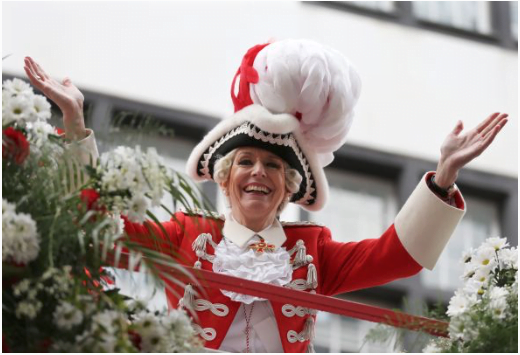Carnival fever has hit Europe

With the arrival of Ash Wednesday, European carnival celebrations reach their peak.
Lucerne hosts Switzerland's second-largest carnival parade (after Basel), called Fastnacht. Here, both at the Fastnacht festival and throughout the state, it is common to speak the Swabian-Alemannic dialect. For example: in German-speaking Switzerland, Baden-Württemberg and southern Bavaria in Germany, Alsace in France, and Vorarlberg in Austria.

Fastnacht in Lucerne begins at 5 a.m. on the last Thursday before Ash Wednesday with a loud explosion called the Urknall (Big Bang). Then the main figure of the carnival, Bruder Fritschi, the imaginary head of the city's senior guild, appears, disembarking with his family from a boat after crossing Lake Lucerne.
Ravensburg, Germany
Fastnacht in Ravensburg, in southwest Germany, has its roots in the 14th century. Since 1970, the Veri carnival guild has revived the festival's original medieval imagery. These include the Schwarze Veri Räuner (Black Veri Robber), the Hexenliesl (Liesl witches), the Papierkrattler (paper maker) – in tribute to the town's medieval tradition of papermaking – and the Schalmeien (a medieval musical instrument).

The Hexenliesl figure (see picture), named after a woman of the same name who lived on the outskirts of the city in the 14th century, warns its inhabitants of an imminent attack.
Cologne, Germany
The Cologne Carnival is one of the largest in Germany. It is firmly rooted in the tradition of the Rhineland carnivals, which, based on medieval customs, aim to drive away winter. A specialty of the Cologne Carnival are the Bützchen, little kisses given to friends and strangers, including police officers (see picture) and the city mayor. Perhaps for this reason, the mayor of Cologne, Mrs. Henriette Recker, decided to join the festival on one of the rafts (see picture).

Dusseldorf, Germany
Düsseldorf celebrates the Rhineland carnival in a different way. On the Monday before Ash Wednesday, the Rosenmontagsumzug parade is held, which is one of the largest in Germany. It is a professionally organized procession and includes a large number of carnival groups, who spend the entire year preparing for the festival (see picture).

The Düsseldorf Carnival features 16 pre-arranged announcers, 19 different performers and bands, and 11 dance troupes, in addition to the large number of carnival figures and floats that take part in the parade on Monday.
Maastricht, Netherlands
The carnival season is also in full swing in the south of Holland, particularly in the city of Maastricht, which is one of the centres of the celebrations. On the main day of the carnival, schools are closed and roads are blocked (see picture). This year the festival took place from 7 to 9 February.

The Maastricht Carnival was first mentioned in a municipal document dating back to 1405, which prohibited gambling during the festival. As in Germany, the festivals in the Netherlands are organized by carnival associations.
Wloclawek, Poland
In central Poland, in Kujawy, along the Vistula River, carnival traditions are very lively. They are concentrated around the city of Włocławek, located in the southern part of Kujawy.

Every year on the last Sunday before Ash Wednesday, men dress up as animals, beggars, and death and wander the streets of Włocławek accompanied by accordion music. Carnival figures include storks, a symbol of spring, goats, symbolizing fertility, and bears, an embodiment of strength. Spectators can come into contact with the figure of death (pictured) or dance with a beggar.
Mohacs, Hungary
The celebration of Shrovetide in Mohacs is called "busojárás" or "the monster's course." The monsters are men dressed in sheepskin coats and wearing large wooden masks. The carnival follows the customs of the ethnic group of the Šokci, who are a South Slavic people closely related to the Croats. In Hungary, they live in the southeastern part of the country, along the Danube and Sava rivers.

The main events of the carnival, which takes place on the last Sunday before Ash Wednesday, are: the arrival of the monsters in the city by boat on the Danube, the procession of the monsters, the burial of winter in a coffin along the Danube and its burning on a bonfire (pictured), and then everyone dancing in a circle on the main square of the city. The Mohács Carnival was added to the UNESCO World Heritage List in 2009.